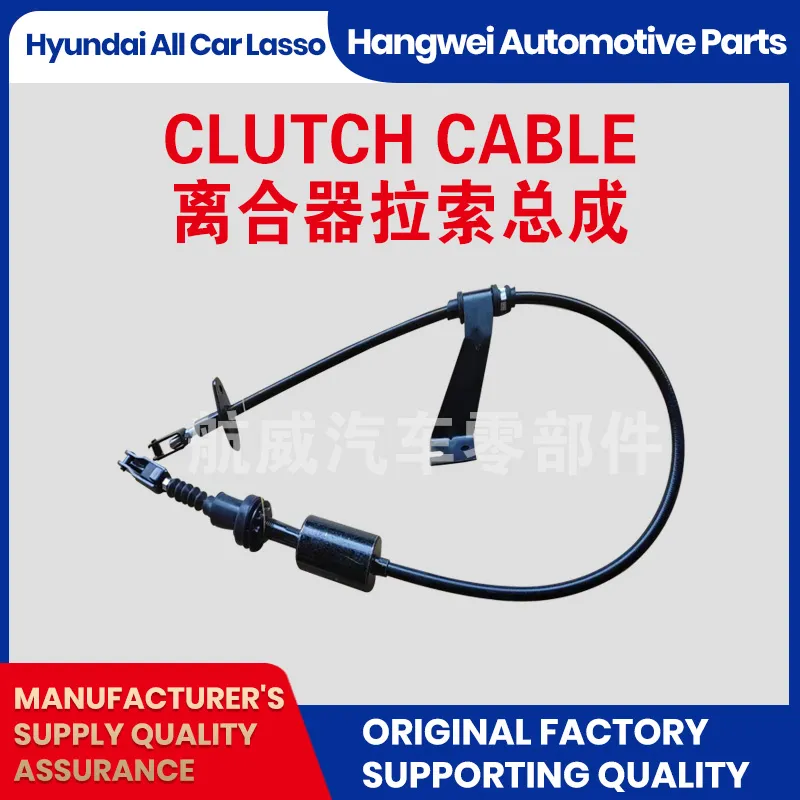Understanding the Function and Importance of Accelerator Throttle Cables in Vehicles
Understanding the Accelerator Throttle Cable An Essential Component of Automotive Performance
The accelerator throttle cable is a crucial component of many internal combustion engine vehicles, playing a vital role in the overall performance and responsiveness of the engine. This slender piece of machinery, often overlooked by car owners, directly connects the accelerator pedal to the throttle body, allowing drivers to control the engine's power output by regulating how much air and fuel enters the combustion chambers. Understanding the function, construction, and maintenance of the accelerator throttle cable is key to ensuring optimal vehicle performance.
The Function of the Accelerator Throttle Cable
When a driver presses down on the accelerator pedal, the movement is transmitted through the throttle cable to the throttle body, which controls the air intake into the engine. The more the accelerator pedal is pressed, the more the throttle opens, allowing more air into the engine. This increased airflow, combined with the appropriate amount of fuel, leads to enhanced power and acceleration. Essentially, the throttle cable acts as a conduit for the driver’s intent, translating foot movement into engine response.
On modern vehicles, particularly those equipped with electronic throttle control (ETC), the function of the accelerator cable has evolved. Instead of a direct mechanical link between the pedal and the throttle body, ETC systems utilize sensors and electronic signals. However, traditional throttle cables remain prevalent in many older models and provide a direct and tactile response that many drivers still prefer.
Construction and Mechanism
The accelerator throttle cable is typically made from high-strength materials that can withstand tension and wear. It consists of a flexible steel cable encased in a protective housing. This housing often incorporates a coating to reduce friction and enable smooth movement. At one end, the cable is attached to the accelerator pedal, while the other end connects to the throttle body. Some systems also utilize a return spring that ensures the throttle closes when the pedal is released, thus preventing unintended acceleration.
Proper routing and installation of the cable are crucial to its function. The cable should be free from kinks or bends that could impede its movement. Additionally, it needs to have the correct tension — too loose, and it may lead to delayed acceleration; too tight, and it can cause unintended throttle opening, which can be dangerous.
Signs of Wear and Issues
Like any mechanical component, the accelerator throttle cable can wear out over time due to exposure to heat, dirt, and road debris. Drivers should be aware of several signs that may indicate a problem with the throttle cable. These include
accelerator throttle cable

- Unresponsive Acceleration If the vehicle does not respond smoothly when the accelerator pedal is pressed, it may indicate a problem with the cable. - Sticking Pedal A sticky or unresponsive acceleration pedal can signal that the cable is frayed or has excessive friction. - Increased Pedal Travel If the pedal feels unusually loose before it begins to engage the throttle, the cable may have stretched or become misaligned.
Maintenance Tips
Regular maintenance of the accelerator throttle cable can prolong its life and improve vehicle performance
. Here are some maintenance tips for car owners1. Inspection Regularly inspect the throttle cable for signs of wear, fraying, or damage. Also, check the housing for any cracks or signs of corrosion.
2. Lubrication Apply a suitable lubricant to ensure that the cable moves freely within its casing. This can help reduce friction and wear.
3. Proper Adjustment Ensure that the throttle cable is correctly adjusted for tension. Consult the vehicle’s manual for specific guidelines.
4. Professional Help If you suspect any issues or if maintenance isn’t yielding improvements, consider visiting a professional mechanic for a thorough inspection and repair.
Conclusion
The accelerator throttle cable may seem like a small and inconsequential part of a vehicle, but its importance cannot be overstated. By understanding its function, maintaining its integrity, and recognizing the signs of wear, drivers can ensure their vehicles perform at their best. Taking care of this essential component contributes to better acceleration response and overall driving safety, making it an integral piece of the automotive puzzle. Maintaining the throttle cable can enhance the driving experience, providing both the responsiveness and control that every driver seeks on the road.
-
Workings of Clutch Pipe and Hose SystemsNewsJun.04,2025
-
The Inner Workings of Hand Brake Cable SystemsNewsJun.04,2025
-
The Secrets of Throttle and Accelerator CablesNewsJun.04,2025
-
The Hidden Lifeline of Your Transmission Gear Shift CablesNewsJun.04,2025
-
Demystifying Gear Cables and Shift LinkagesNewsJun.04,2025
-
Decoding Clutch Line Systems A Comprehensive GuideNewsJun.04,2025
